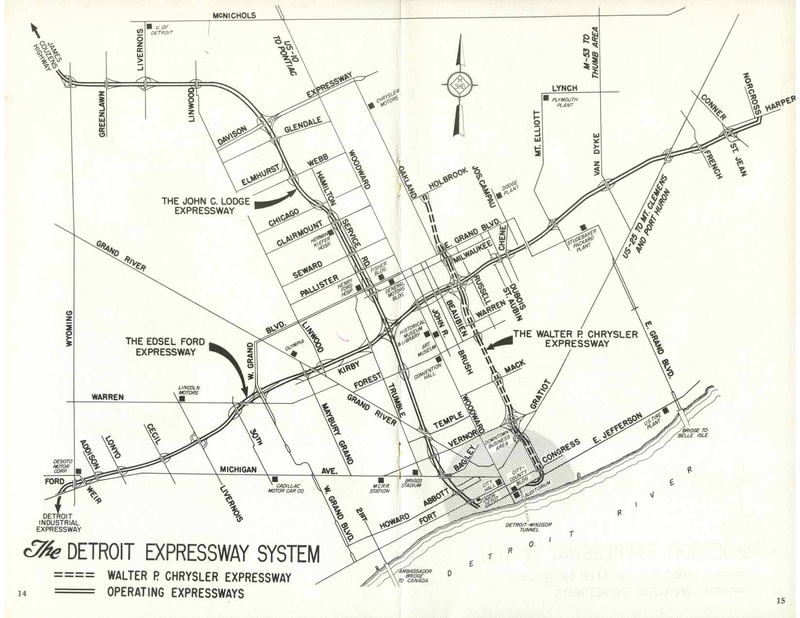ORIGINS OF "REDEVELOPMENT"
Black Detroiters were confined to certain portions of the city after decades of racially-motivated housing policies. Systemic discrimination at every level, from housing to education to employment, created a disadvantaged class of Detroit residents who were at risk during urban renewal initiatives. The Housing Act of 1949 created specific plans for slum clearance and began a series of projects that would drastically change the lives of Detroit’s Black residents. The demolition of housing to make way for an interconnected freeway system, combined with continued employment discrimination, led to growing grievances among Black residents with the city’s policies.
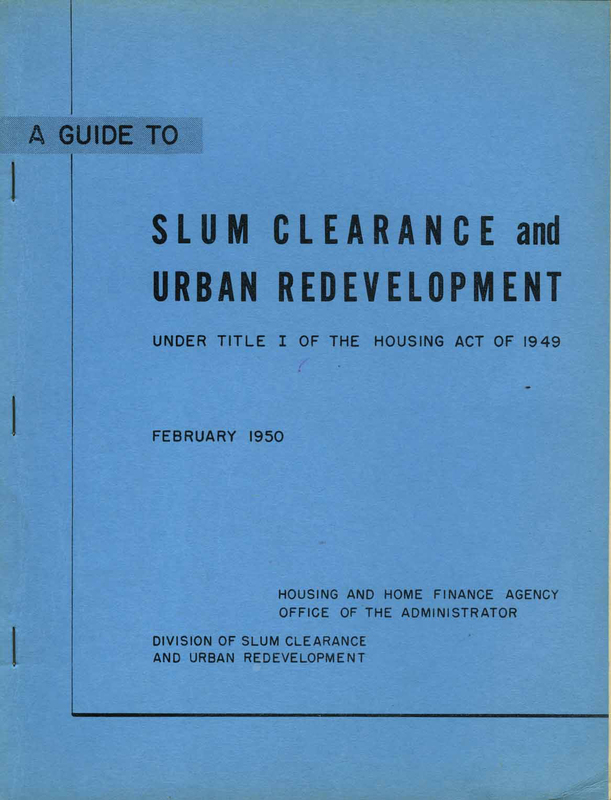
A Guide to Slum Clearance and Urban Development outlined the Housing Act of 1949. Part of President Harry S. Truman’s domestic program known as the Fair Deal, the Housing Act greatly expanded the federal government’s role in public housing. February 1950. Carl Almblad Papers, Box 12.
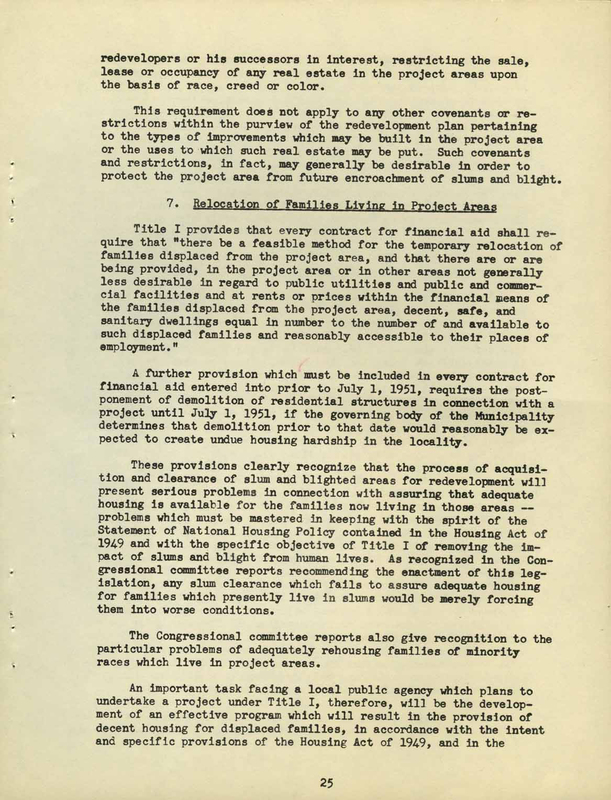
A section of A Guide to Slum Clearance and Urban Development, as highlighted above, addressed the relocation of families living in affected areas. February 1950. Carl Almblad Papers, Box 12.
Did the City of Detroit do an adequate job of finding alternative housing for the displaced residents of Black Bottom and Paradise Valley? What evidence supports this conclusion?
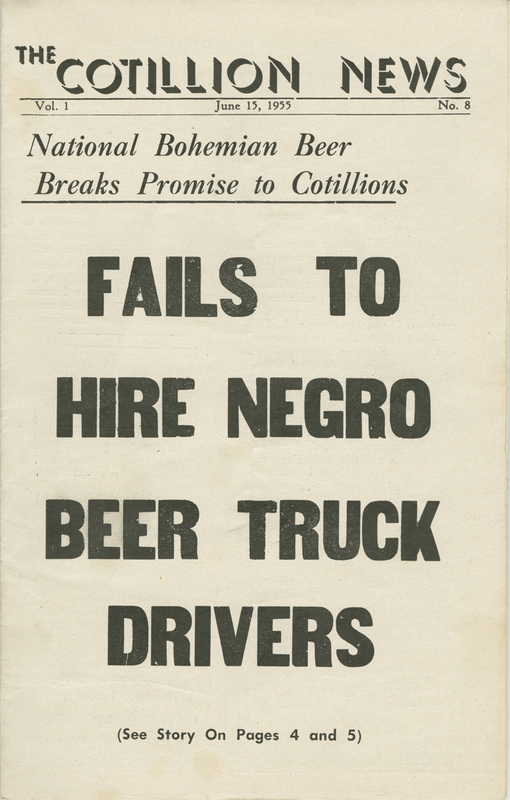
The Cotillion Club, an organization of successful Black men in Detroit striving to gain equal rights and opportunities, uses its newsletter to denounce a beer company for backing out of a promise to hire Black truck drivers. June 15, 1955.
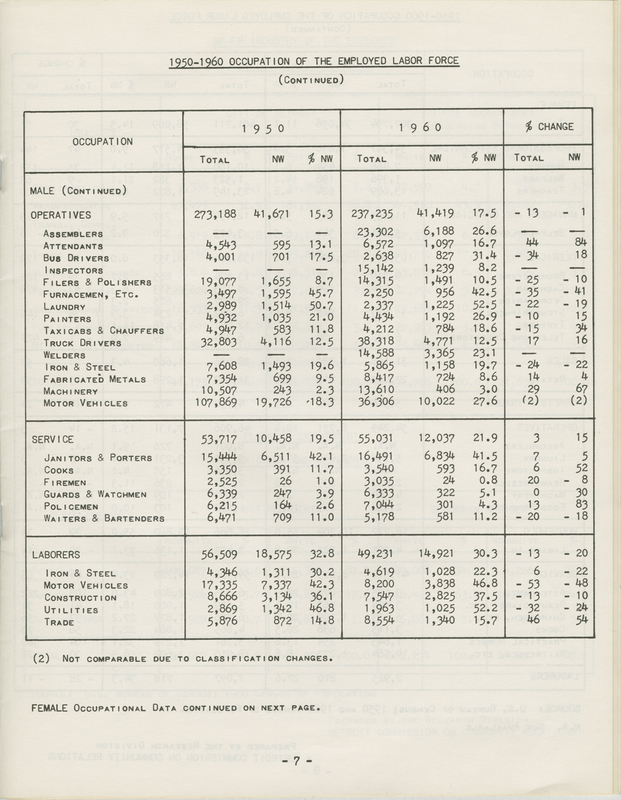
A report from the Detroit Commission on Community Relations documents employment and pay disparities white and non-white men in 1950 and 1960 in various occupations in Detroit. May 1963. Click the image to read selected pages of the report.
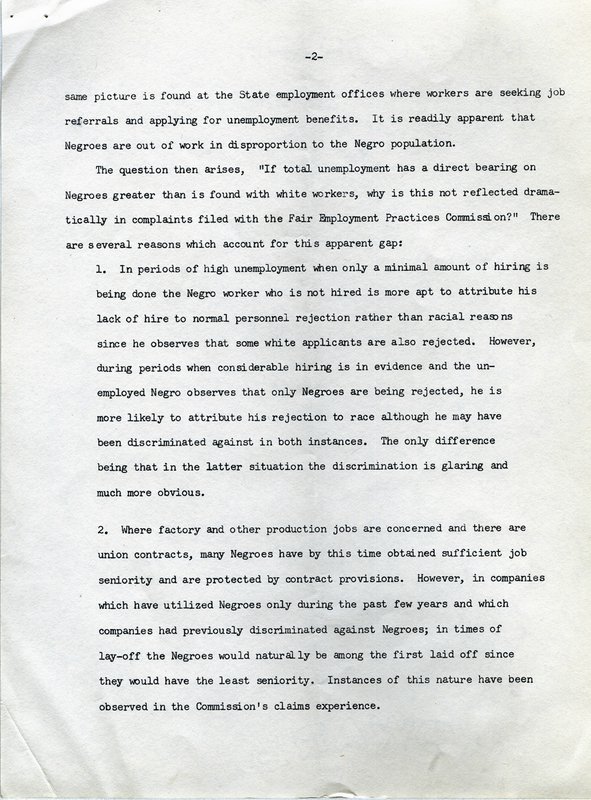
George Schermer, director of Detroit’s Mayor’s Interracial Committee, provides testimony before Robert Montgomery, Chairman, State Affairs Committee, Michigan House of Representatives. In his testimony, Schermer explains that following Detroit's 1943 race riot, "a primary factor to be dealt with was economic opportunity. The facts of economic discriminations and restrictions upon minority groups, especially the Negro group, were everywhere manifest." April 18, 1951. Detroit Commission on Community Relations (DCCR)/Human Rights Department Records, Part 3, Box 74, Folder 8.
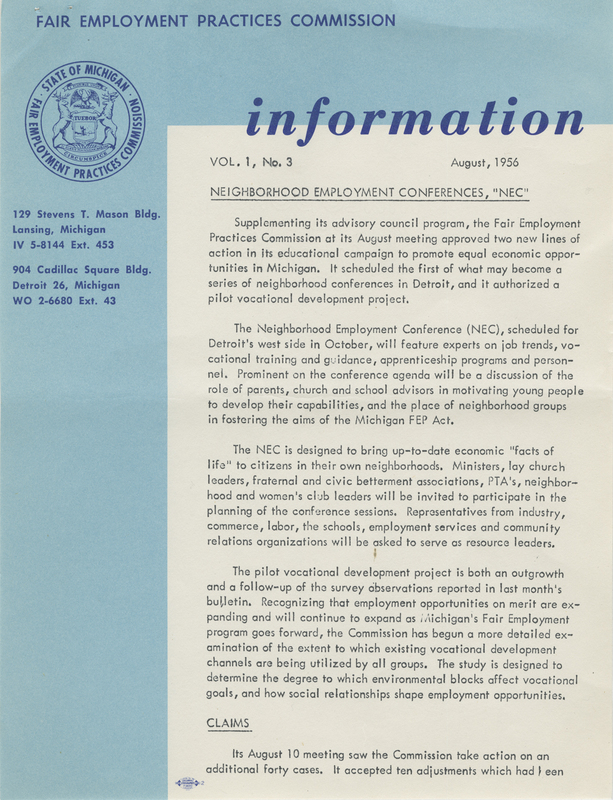
A Fair Employment Practices Commission newsletter announces the establishment of neighborhood employment conferences to promote equal opportunity in Michigan. August 1956. UAW Women's Department: Lillian Hatcher Records, Box 1, Folder 7.

Billed as “the most complex highway engineering project ever attempted in the City of Detroit,” the Walter P. Chrysler Expressway broke ground on January 30, 1959. Attendees of the ceremony, which took place at the corner of Hastings and Macomb Avenues, received the booklet pictured above. The entire Black Bottom district was razed to make room for the Chrysler Expressway, part of the city’s urban renewal program. January 30, 1959. Carl Almblad Papers, Box 8, Folder 56.
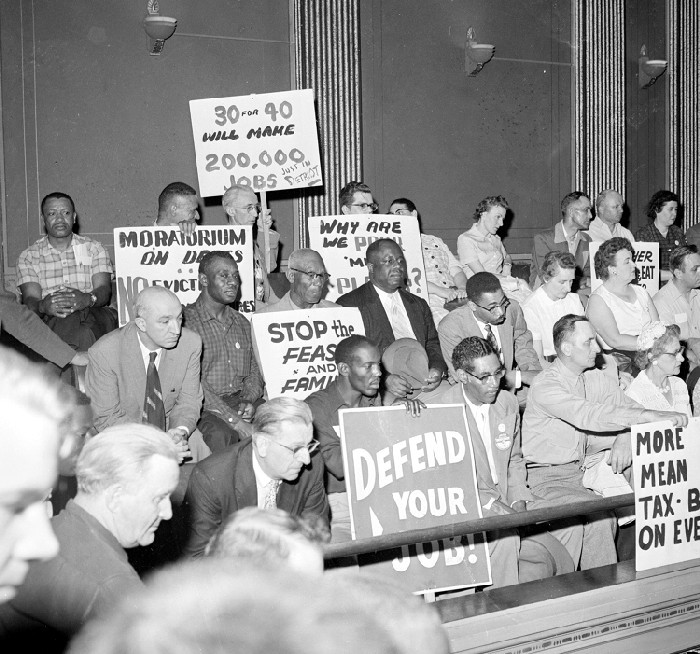
Protesters, including Detroit residents, gather in Lansing, Michigan for an unemployment march. 1959. From the Detroit News Photograph Collection.
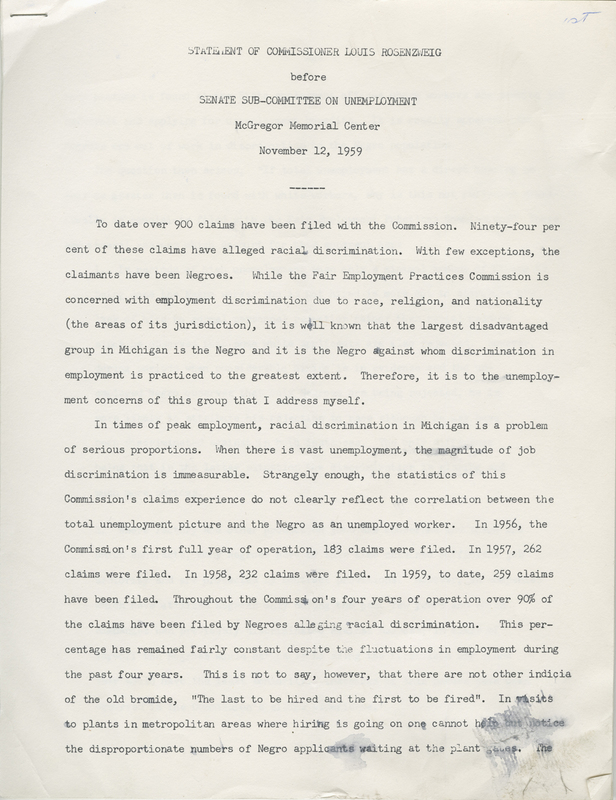
A statement from Louis Rosenzweig of the Michigan Fair Employment Practices Commission to the Michigan Senate Subcommittee on Unemployment maintains that, "It is well known that the largest disadvantaged group in Michigan is the Negro, and it is the Negro against whom discrimination in employment is practiced to the greatest extent....In times of peak employment, racial discrimination in Michigan is a problem of serious proportions." November 12, 1959. Jewish Labor Committee Records, Box 9, Folder 7.
